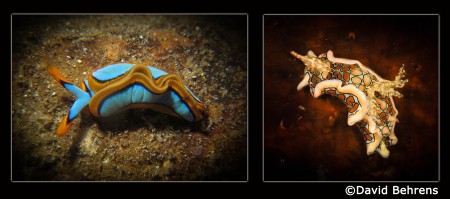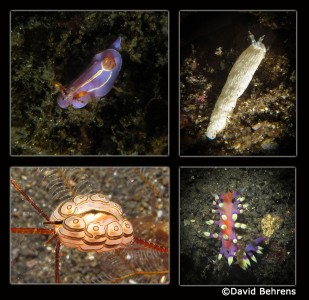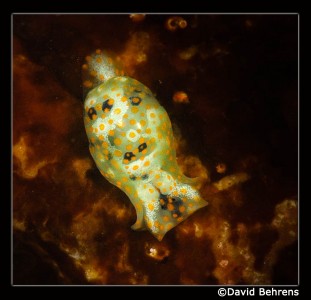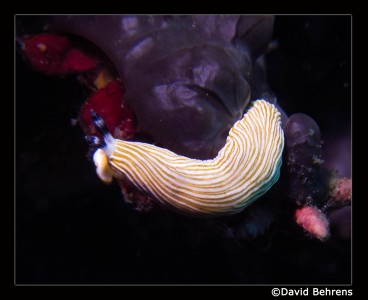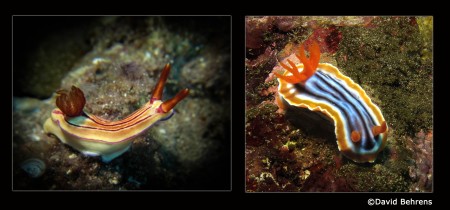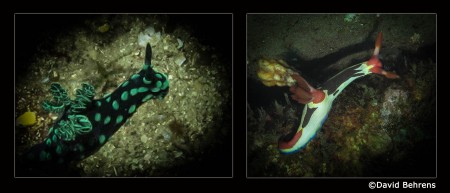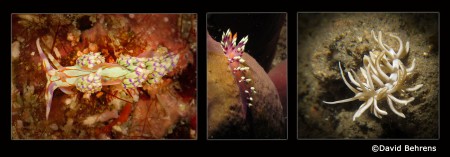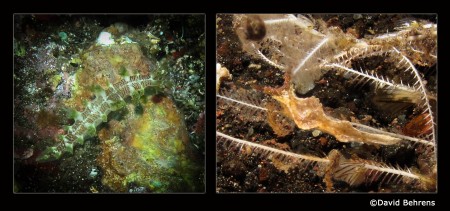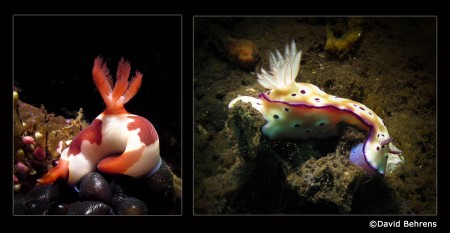March of the Nudis!
Please join us each month on our journeys of discovery. Starting in April, on the first Monday of every month, we will delve into a new theme. Lembeh Resort and critters@Lembeh will feature special content, photos, and videos on marine life. Friends from the dive community, researchers, professional photographers, underwater journalists and frequent travellers to Lembeh Strait in North Sulawesi will collaborate with us on exclusive articles, underwater photographs, underwater videos and more.
This month we’ll begin with a lot of macro photographers’ favorite – the ever popular nudibranch. We are thrilled to introduce March of the Nudis, where we will feature all things nudi! Our guest advocate for this special theme is Dave Behrens, if you’ve ever picked up the reference guide – Indo Pacific Nudibranchs and Sea Slugs, then you’re familiar with Dave’s work. Dave’s love of all things nudi propelled him to write this article especially for Lembeh Resort, critters@Lembeh and you, the nudi lover. His article includes a variety of nudi information, along with photos from his private collection.
It’s March Madness – are YOU ready!? Enjoy….
March of the Nudis!
Part I
By Dave Behrens
Most of us recognize the word “nudibranch” and think of those flamboyant butterflies of the sea we can’t wait to focus our cameras on. But what is a nudibranch? Most of us use this word as a catch all, for all the sea slugs, beautiful chromodorids, lovely aeolids, sapsucking slugs, side gilled slugs and sea hares. That entire group would be more accurately called opisthobranchs, which in addition to true nudibranchs, includes head shield slugs, side-gilled slugs, sea hares and the sapsucking slugs. All are mollusks related to octopus, squid, snails, clams and scallops.
Although colorful – these examples of sea slugs are not Nudibranchs, but in fact members of closely related opisthobranchs.
The class Nudibranchia can be divided into four subgroups – the Dorids, Arminids, Dendronotids and the Aeolids. These four groups all share characteristics in common, but are different from other members of opisthbranchiata.
Shown here are examples of a dorid, an arminid, a dendronotid and an aeolids nudibranch.
Nudibranchs can be characterized by having no shell, exposed gills, carnivores not herbivores and being hermaphroditic. Let’s look at each of these more carefully. Whereas some opisthobranchs like the bubble snails keep their shell through adulthood, nudibranchs loose the shell as the larvae settle onto the bottom for a benthic existence.
The bubble snail, Hytadina retains its shell through adulthood.
Nudibranchs as their name implies – nude – branchia – have naked exposed, gills. In the arminids the gill is hidden under the mantle on the side of the slug.
The gill of this arminid nudibranch in along the slug’s side hidden under the mantle.
Dorid nudibranchs fall into two sub groups – the cryptobranch dorids, which can pull their gill into a gill pocket on the dorsum, and the phanerobranch dorids, which have non-retractile gills.
Cryptobranch dorids like these two chromodorid species, expose their gills to breathe, but can retract them into a pocket when disturbed or threatened.
Phanerobranch dorids like these two Nembrotha’s cannot retract their gills.
Aeolid nudibranchs and some members of the dendronotids breathe by absorbing oxygen though the long papillae on their backs called cerata, and through ridges on their backs in members of the family Lomanotidae.
The long papillae lining the back side, or dorsum, of aeolids nudibranchs function for both respiration (breathing) and digestion.
Marionia (left) respire with branched cerata, while Lomanotus (right) does the same with ridges on its dorsum.
The diet of nudibranchs is the subject of an entire article. All nudibranchs are carnivores feeding on other marine animals, not herbivores like sapsucking slugs and sea hares. They feed by rasping away at their prey with an organ called the radula. The radula is like a tongue covered with teeth. The closest analogy I can come up with is the tongue of a cat.
Each family of nudibranchs feeds on a specific prey. Most cryptobranch dorids feed on sponges, while species like Nembrotha feed on tunicates. Most aeolids feed on hydroids, however some like Favorinus feed on the eggs of other species.
Nembrotha chamberlani (left) feeds on solitary tunicates, while dorids like Risbecia (right) feed on sponges.
Stay tuned for the second installment of our articles on nudibranchs to find out about their bizarre sex lives, ingenious defense mechanisms and more!”
A Note About the Author:
Dave Behrens is one of the world’s foremost experts on nudibranchs and is the author of 10 books and over 70 articles in technical journals. He is also currently writing for Scuba Diver Magazine (Korean version). He has recently been working on a newly revised edition of I.D. book “Nudibranchs & Sea Slugs: Indo Pacific” which will be available in the fall. The book will include over 1950 species and will feature 2400 beautiful colour photos so nudi lovers have a treat to look forward to. In the mean time, if you don’t already have a copy, you can check out his fabulous “Nudibranch Behavior” book available at www.fishid.com, direct link to the book is here: http://tinyurl.com/mu64det. Dave is always happy to help you identify that nudibranch you can’t find in the I.D. books and he can be contacted at davidwbehrens@gmail.com

